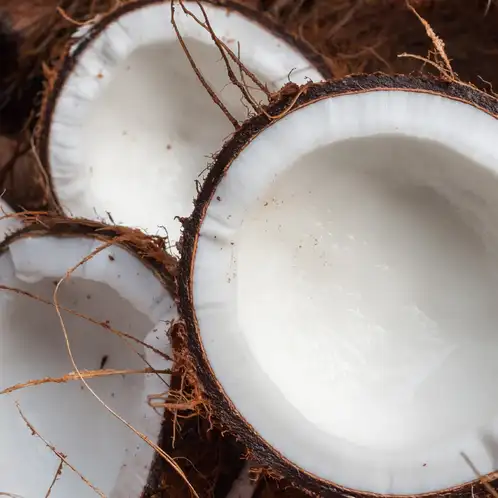The Psychology of Scent Discover how scent is tied to emotion and memory, and ways to incorporate scent psychology into candle making.
When was the last time you smelled something that triggered a memory? Whether it was a perfume that all of a sudden reminded you of someone you haven’t thought of in years or the smell of fresh cut grass that took you back to a childhood day—olfaction, or our sense of smell, is more directly connected to our emotion and memory centers than any other senses.
In this article, we’ll look into the science behind scent psychology, explore how different scents are tied to common emotions and memories, and share ideas on how to incorporate scent psychology into your candle collection or business.

How We Process Scent
To understand why the sense of smell tends to be more emotional than our other senses, it’s helpful to know how the other senses are processed.
The thalamus is the part of the brain that relays incoming sensory information to the appropriate processing centers. Vision, hearing, taste, and touch stimuli all pass through the thalamus before reaching the amygdala and hippocampus.
But scent information doesn’t need to pass through the thalamus. Instead, it travels directly to the olfactory bulb, a smell-analyzing region of the brain that’s connected to the amygdala and hippocampus. The amygdala processes emotions and the hippocampus creates and retrieves memories. When the hippocampus deems a smell important, it files that emotional memory—and the scent it’s connected to—and can store it indefinitely.
The connection of the olfactory bulb, amygdala, and hippocampus explains why certain scents can instantly trigger a strong emotional response or transport you to a specific memory.
Scent and Emotional Response
Emotional memories linked to scent are known as odor-evoked autobiographical memories, or OEAMs. Often originating from early life before age 10, OEAMs tend to be accompanied by a sense of being brought back in time.
When we smell a nostalgic scent, we might notice that we're flooded with the emotion it was once connected to before we can recall the specific memory that triggered the emotion. This explains why it feels so natural to describe certain scents using emotional language like happy, refreshing, or comforting.
The scent of a baked good may trigger feelings of contentment and happiness, all before realizing that those feelings are connected to positive moments from childhood, like birthday celebrations or holiday gatherings adorned with baked goods.
And while certain scents may evoke universal feelings, scent is also deeply personal. Each person’s unique experiences shape how they respond to different smells. Marcel Proust, a celebrated French author, explored the phenomenon of OEAMs in his seven-part novel "In Search of Lost Time (À la recherche du temps perdu)," when the taste and smell of a madeleine dipped in tea transports the narrator back to vivid memories of his childhood.
Proust’s exploration of this phenomenon inspired much of the scientific exploration of OEAMs; it was so influential that the term “Proustian memory” or “Proust effect” is often used synonymously.
The Proust phenomenon also underscores just how personal everyone's experience of scent is. While Proust’s character experienced an OEAM linked to the scent of madeleines dipped in tea, another person smelling the same tea-soaked treat would likely recall different emotional memories, or perhaps none at all.
Our scent associations are formed by the memories our brains have attached to specific smells. For example, if you always smelled lavender at bedtime as a child, you might associate it with calmness and relaxation. On the other hand, if lavender wasn’t a part of your regular bedtime routine as a child but was used at your childhood friend’s home, it could trigger memories of that friend or being at their house.
Scent and Common Emotional Associations
Each person has their own set of unique scent associations, but many of us also share widely recognized ones. For instance, citrus scents, like lemon or orange, are often linked to feelings of energy and freshness; floral scents, like rose and jasmine, are typically tied to romance or femininity.
These common scent associations are part of what makes scent psychology so fascinating—and useful! By selecting scents with common associations, we can create scented products that elicit particular emotions and offer customers a truly mood-shifting experience.
Vanilla
Vanilla often suggests feelings of warmth and comfort. This rich, sweet scent can kindle memories of home-baked treats or cozying up on a cold day, making it perfect for creating a relaxing, welcoming atmosphere.
Citrus
Bright and zesty, citrus scents like lemon, orange, and grapefruit are known for their energizing and uplifting qualities. These fresh, tangy aromas are often linked to feelings of cleanliness and focus, making them great for boosting mood and mental clarity.
Green Leaf
The fresh, earthy smell of green leaves brings to mind the outdoors. Its crisp, vibrant scent is commonly associated with renewal and calm, making it perfect for creating a grounding, serene environment that feels connected to nature.
Ozonic
Ozonic scents are reminiscent of fresh air and open spaces, often described as smelling like an ocean breeze or the atmosphere after a rainstorm. These clean aromas summon feelings of freshness, tranquility, and a sense of escape, transporting you to peaceful landscapes.
Coconut
Coconut is commonly linked to tropical vibes, sun-soaked beaches, and relaxation. Its creamy, sweet aroma often recalls memories of vacations and carefree days in the sun, making it perfect for creating a laid-back atmosphere.
Final Thoughts
Scent has a powerful impact on how we feel and what we remember. By understanding how our brains process scent, we can better harness its emotional power in our daily lives—whether that looks like creating a comforting space, evoking cherished memories, or making candles and home fragrance products that provide a positive emotional effect.






























